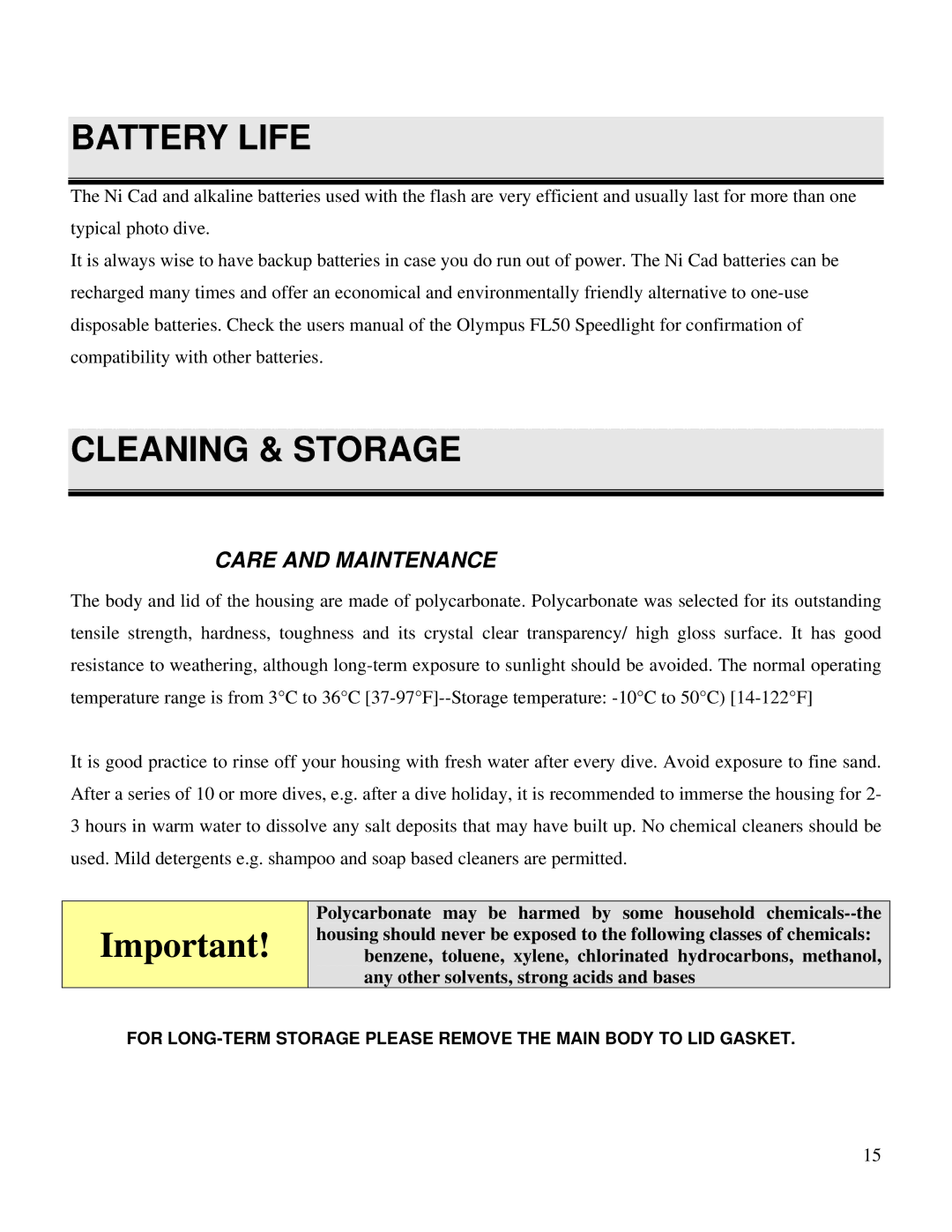
BATTERY LIFE
The Ni Cad and alkaline batteries used with the flash are very efficient and usually last for more than one typical photo dive.
It is always wise to have backup batteries in case you do run out of power. The Ni Cad batteries can be recharged many times and offer an economical and environmentally friendly alternative to
CLEANING & STORAGE
CARE AND MAINTENANCE
The body and lid of the housing are made of polycarbonate. Polycarbonate was selected for its outstanding tensile strength, hardness, toughness and its crystal clear transparency/ high gloss surface. It has good resistance to weathering, although
It is good practice to rinse off your housing with fresh water after every dive. Avoid exposure to fine sand. After a series of 10 or more dives, e.g. after a dive holiday, it is recommended to immerse the housing for 2- 3 hours in warm water to dissolve any salt deposits that may have built up. No chemical cleaners should be used. Mild detergents e.g. shampoo and soap based cleaners are permitted.
Important!
Polycarbonate may be harmed by some household
benzene, toluene, xylene, chlorinated hydrocarbons, methanol, any other solvents, strong acids and bases
FOR
15
